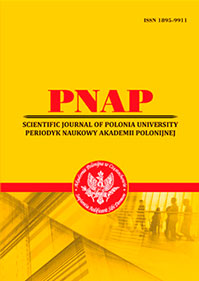ІСТОРИЧНІ, СОЦІАЛЬНІ ТА КУЛЬТУРНІ КРИТЕРІЇ ДЛЯ ПОРІВНЯЛЬНОГО ДОСЛІДЖЕННЯ МОЛОДІЖНОЇ ЛЕКСИКИ (НА ПРИКЛАДІ НІМЕЦЬКОЇ ТА УКРАЇНСЬКОЇ МОВ)
Анотація
Стаття присвячена порівняльному опису молодіжної лексики на прикладі німецької та української мов. На першому етапі дослідження виокремлено ключові особливості молодіжної лексики. Встановлено, що це мовне явище є специфічною лексичною підсистемою національної мови, що найактивніше використовується соціально-віковою групою «молодь». Порівняно з літературною мовою їй властиві неформальність, емоційне забарвлення, експресивність. Молодим людям притаманна висока чутливість до зовнішніх впливів, що визначає вибір засобів спілкування. Номінативні процеси в такому мовному субкоді детерміновані пошуком нових слів і виразів, які вказують на соціальний статус і соціальні ролі їхніх користувачів, а також внутрішньогрупові відносини та ієрархію. На другому етапі дослідження розроблено критерії для порівняльної характеристики німецької та української молодіжної лексики: взаємозв’язок з іншими лексичними підсистемами, використання специфічного вокабуляру як засобу самоідентифікації, кількість лексико-семантичних груп, регіональна неоднорідність, внутрішньогрупова неоднорідність, конспіративна функція, особливості процесу запозичення з іноземних мов, емоційна конотація, частка грубих слів, залежність від впливу засобів масової інформації. Як результат, виявлено спільні та відмінні риси зазначених мовних субкодів. Як у німецькій, так і в українській мовах вони служать для вербалізації світогляду та почуттів молоді, відображають спробу продемонструвати протест, самоідентифікацію, внутрішньогрупову гетерогенність. Найважливіші лексико-семантичні групи містять широкий вибір синонімів для задоволення вищезазначених потреб. Історичні, соціальні та культурні чинники визначають деякі відмінності між двома досліджуваними мовними субкодами, головним чином у регіональній неоднорідності та частці грубих слів. При цьому обидві досліджувані лексичні підсистеми постійно збагачуються словами та виразами, запозиченими із популярних медіаджерел. Також відзначається зростання ролі американських субкультур.
Посилання
2. Кондратюк Т. М. Словник сучасного українського сленгу. Харків : Фоліо, 2006. 350 с.
3. Мартос С. А. Молодіжний сленг як складник мови міста. Вісник Харківського національного університету імені В. Н. Каразіна. «Філологія». Харків, 2004. № 632. Вип. 42. С. 240–243.
4. Масенко Л. Т. Мова і політика. Київ : Соняшник, 1999. 99 с.
5. Словник українського молодіжного сленгу / укл. С. Пиркало, за ред. Ю. Мосенкіса. Київ : АТ ВІПОЛ, 1998. 288 с.
6. Ставицька Л. О. Проблеми вивчення жаргонної лексики: соціолінгвістичний аспект. Українська мова. 2001. № 1. С. 55–68.
7. Ставицька Л. О. Український жаргон. Словник. Київ : Критика, 2005. 496 с.
8. Duden – Das neue Wörterbuch der Szenesprachen. Duden, 2009. 208 S.
9. Ehmann H. Jugendsprache und Dialekt: Regionalismen im Sprachgebrauch von Jugendlichen. Opladen : Westdeutscher Verlag, 1992. 252 S.
10. Ehmann H. Endgeil – Das voll korrekte Lexikon der Jugendsprache. 1. Aufl. München : C. H. Beck, 2005. 178 S.
11. Freimane L. Vergleich der deutschen und lettischen Jugendsprache der Gegenwart. Jugendsprachen – Spiegel der Zeit. Internationale Fachkonferenz 2001 an der Bergischen Universität Wuppertal. Frankfurt am Main : Peter Lang, 2003. S. 211–220.
12. Henne H. Jugend und ihre Sprache: Darstellung, Materialien, Kritik. Berlin; New York : de Gruyter, 1986. 385 S.
13. Langenscheidt 100 Prozent Jugendsprache 2018 (Deutsch – Englisch). München : Langenscheidt, 2017. 160 S.
14. Oeter R., Dreher E. Jugendalter. Entwicklungspsychologie. Weinheim : Beltz, 1995. S. 310–395.
15. PONS Wörterbuch der Jugendsprache – Sammelband : Das Original – unzensiert. 1. Aufl. Stuttgart : PONS, 2016. 288 S.
16. Schlobinski P., Kohl G., Ludewigt J. Jugendsprache. Fiktion und Wirklichkeit. Opladen : Westdeutscher Verlag, 1993. 223 S.
17. Wehrli Ch. Anglizismen in BRAVO. Eine empirische Untersuchung mit Schülern. Zürich : Studentendruckerei, 2002. 234 S.
18. Zhu J. Jugendlicher Sprachgebrauch in kontrastiver Sicht: Deutsch-Chinesisch. Jugensprachen – Spiegel der Zeit: internationale Fachkonferenz 2001 an der Bergischen Universität Wuppertal. Frankfurt am Main : Peter Lang, 2003. S. 185–186.
19. Zinnecker J. Im Schulbunker wimmelt es nur von fiesen Hunden, Drachen und alten Knackern. Pädagogik extra. 1979. No. 4. S. 39.
 ISSN
ISSN 


.png)



